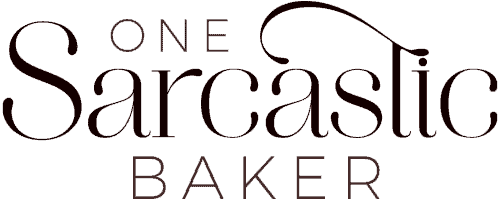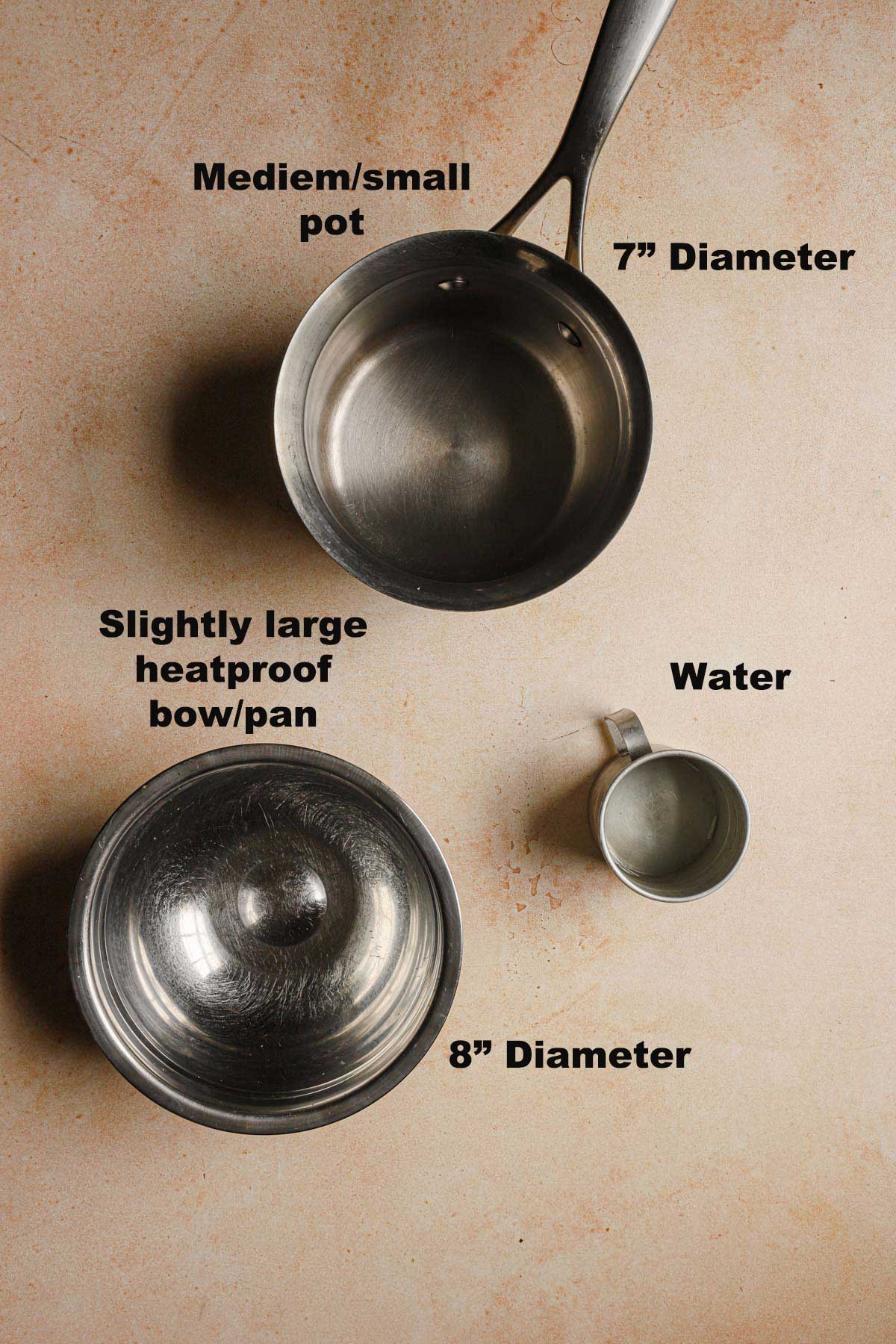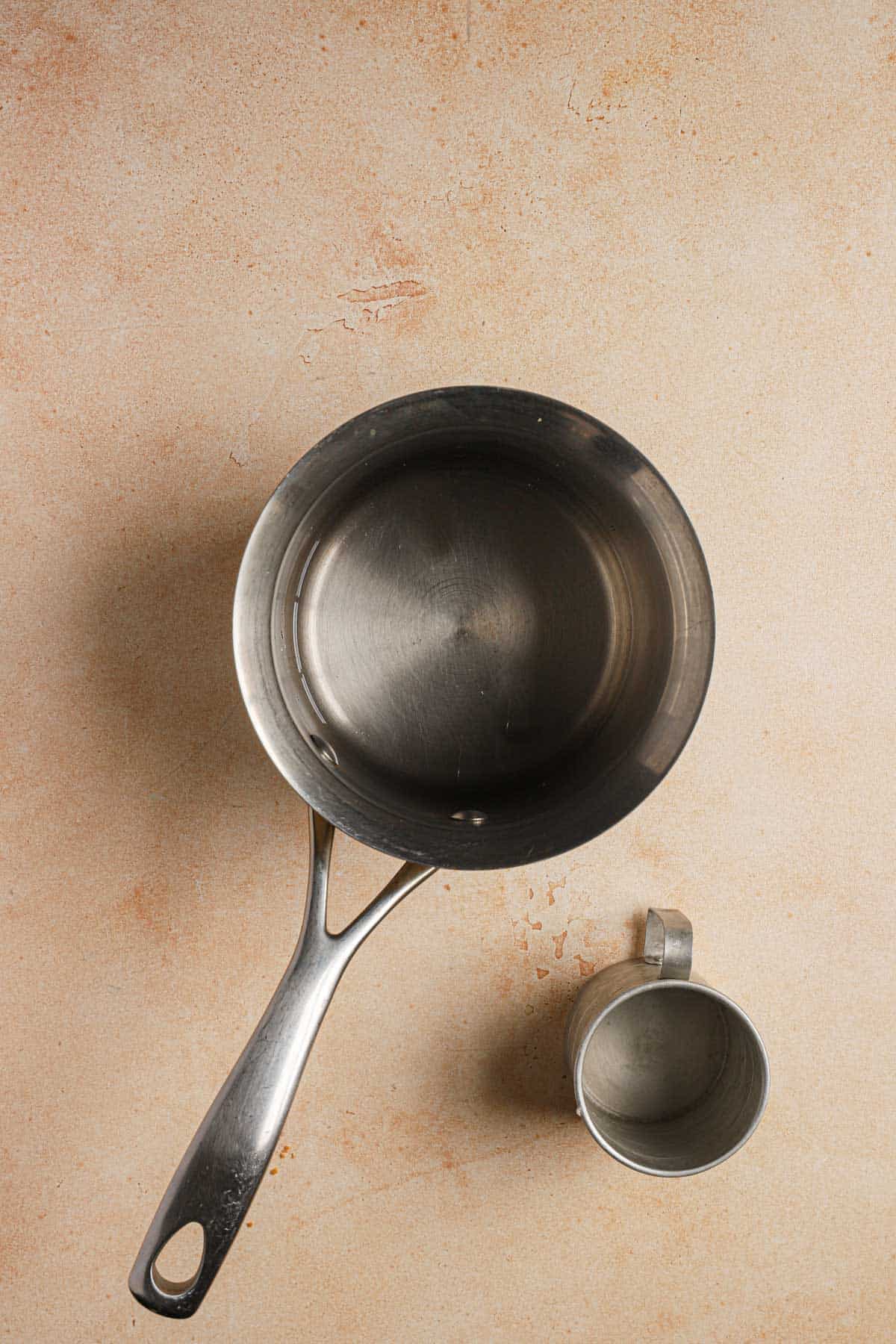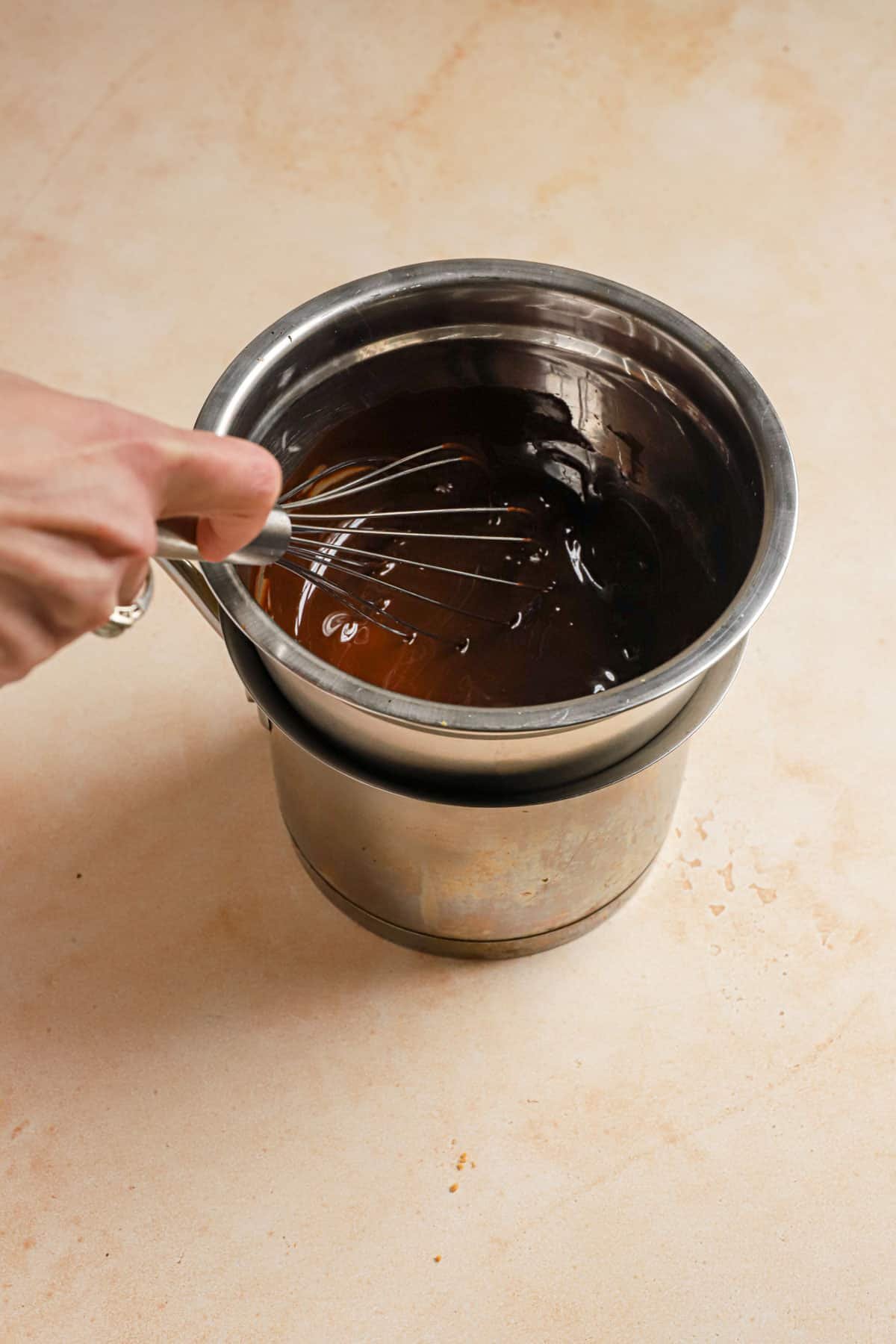In the realm of cooking, certain techniques and tools can elevate your culinary game to new heights. One such tool is the double boiler, also known as a bain marie. This simple yet invaluable appliance is crucial in delicate cooking processes, ensuring precision and finesse in your dishes.
This post may contain some affiliate links. For more information, check out our Disclosure Policy.
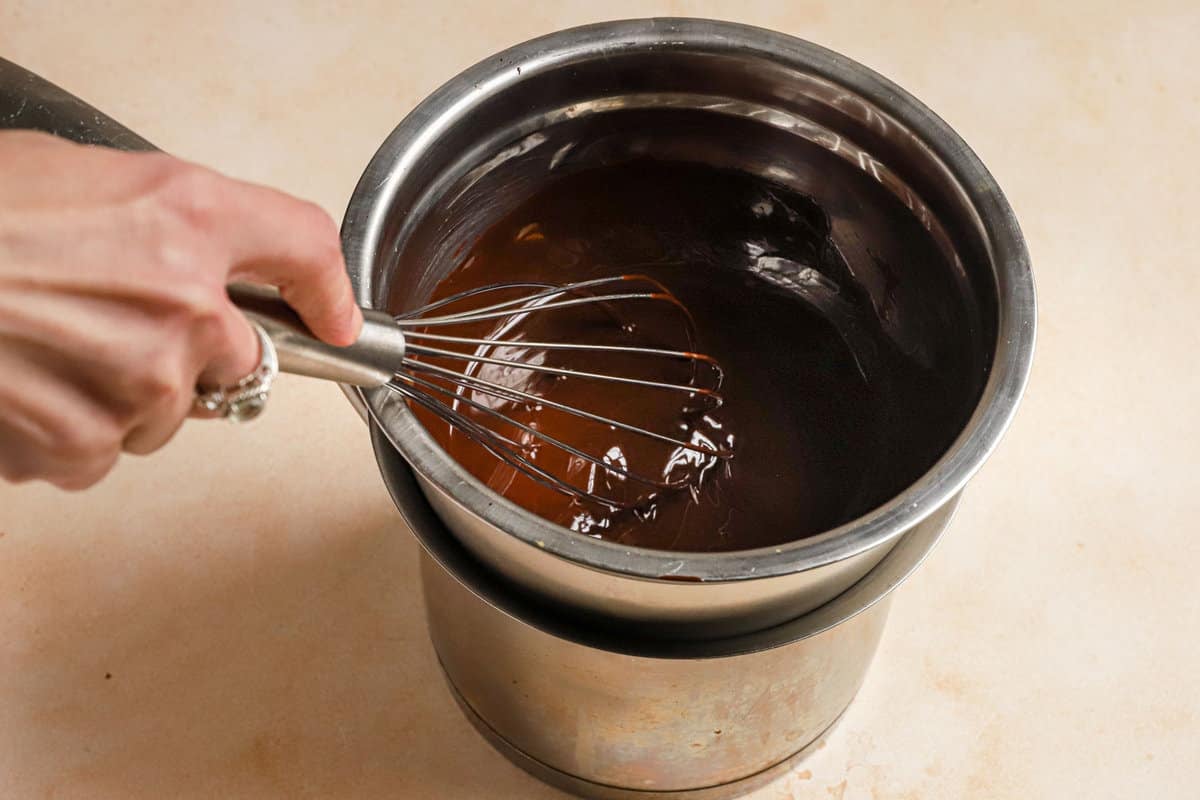
What is a Double Boiler
A double boiler is a kitchen tool consisting of two nested pots, where the bottom pot holds simmering water, and the top pot sits snugly on top, allowing gentle, indirect heat to cook or melt ingredients without scorching or burning. This setup creates a controlled environment ideal for tasks that require low and consistent heat, such as melting chocolate or making egg-based custards, sauces, or delicate emulsions.
How Does It Work
The principle behind a Bain Marie is simple yet effective. The water in the bottom pot is heated to a gentle simmer, producing steam that rises and indirectly heats the contents of the top pot. This indirect, gentle heat prevents direct contact between the delicate ingredients and the heat source, reducing the risk of overheating and ensuring a gradual, uniform temperature throughout the cooking process.
This technique is very similar to the water bath technique. Still, because steam conducts heat much slower than water, the double boiler method is perfect for cooking/baking delicate foods like egg yolks and chocolate.
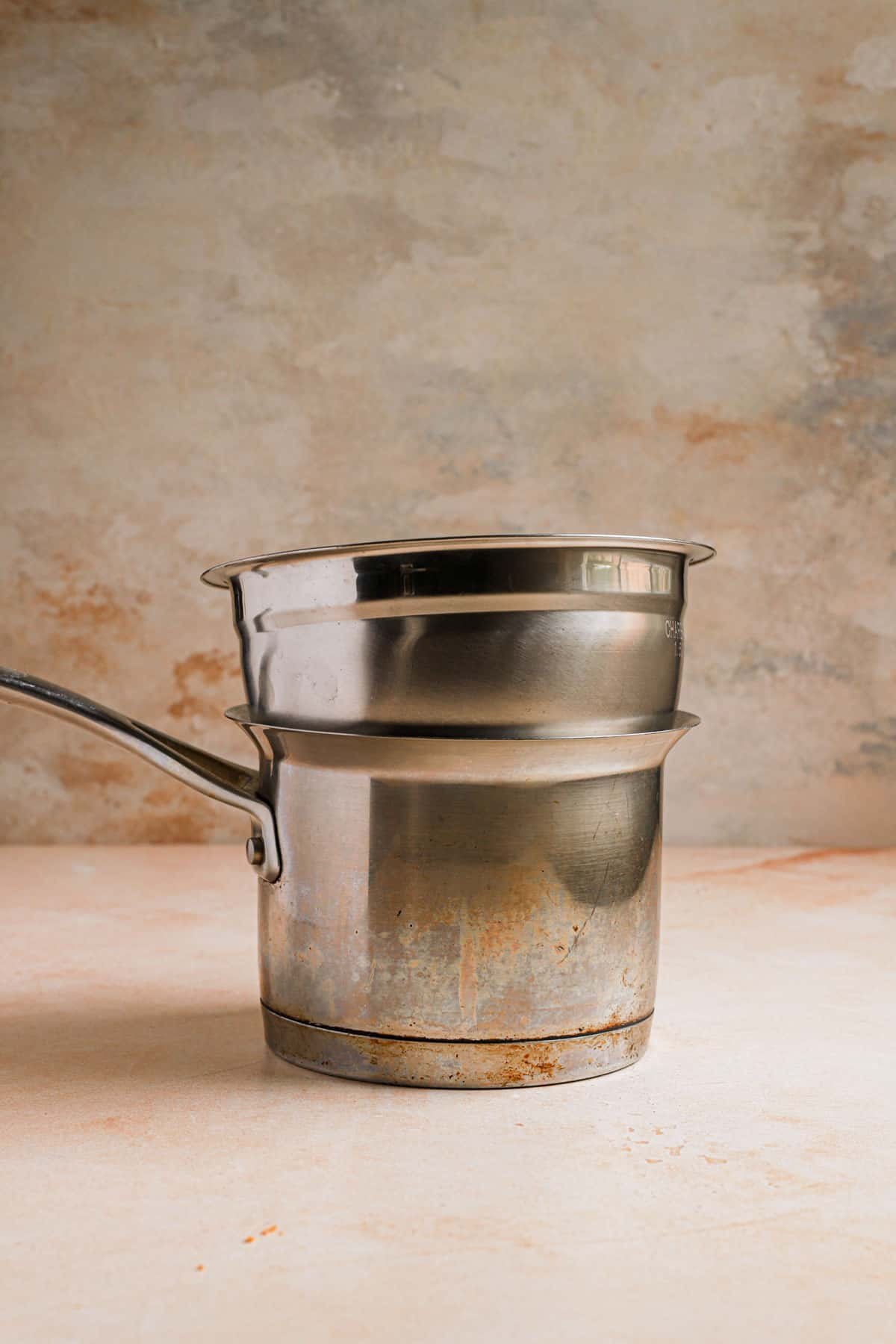
When Should I Use One
A double boiler is indispensable for precise temperature control and gentle heating tasks. Here are some common scenarios where the use of a Bain Marie comes in handy:
- Melting and Tempering Chocolate: Chocolate is notorious for its sensitivity to heat. Using this technique ensures smooth, evenly melted chocolate without the risk of burning or seizing.
- Making Custards and delicate sauces: Custards like crème anglaise or hollandaise sauce require gentle heating to prevent curdling. A double boiler provides the perfect environment for achieving silky-smooth textures.
- Tempering Eggs: Like when we make Tiramisu. A Bain Marie prevents them from scrambling by maintaining a consistent, low temperature when incorporating eggs into sauces or desserts.
- Emulsifying Eggs. Some cakes, like sponge cakes, require the eggs to be at room temperature. Otherwise, the egg yolk will not whip the air properly. Whipping the eggs over a bain marie ensures they are at the right temperature to achieve the right volume.
How to Make a Homemade Double Boiler
Time needed: 10 minutes
Instead of buying a Bain Marie, use the tools you have in your kitchen to make one at home in no time.
- Choose two pots
Select a small to medium-sized pot for the bottom and a slightly larger pot or a bowl that can fit snugly on the top without the bottom of the bowl touching the bottom pan. There is no need for special professional chef equipment. A regular pot and any stainless steel bowl would do just fine. The sizes in the picture are just an example; use what you have.
- Add water
Pour enough water into the bottom pot, ensuring it doesn’t touch the bottom of the top pot when placed inside. No more than 1-2 inches of water. Then, bring the water to a boil.
- Place the top pot:
Nestle the large pot securely onto the lower pot.
- Heat
Reduce the stovetop heat to low to medium, and continue following your recipe.
Tips for Using a Bain Marie
to make the most of your double boiler, keep these expert tips in mind:
- Choose the Right Size: Avoid using a shallow pan. The space between the water and the top pan (or bowl) is significant. If you are unsure if there is enough space, do a test: place the top pan/bowl over the top of the pan with the water, then lift it and check the bottom of the pan/bowl. If it is dry, then you have enough space. Do this before placing the pan over the stove. Otherwise, the steam coming from the boiling water might give you a false impression.
- Ensure the top pot/bowl fits securely on the bottom pot to prevent steam from escaping and maintain consistent heat. You can wrap the pan’s edges with aluminum foil to eliminate movement.
- Stir Frequently: Stir ingredients regularly to promote even heating and prevent sticking or scorching.
- Use Oven Mitts: Things can get hot; always use oven mitts or kitchen towels when handling.
- Avoid Rapid Temperature Changes: Gradually increase or decrease the heat to avoid sudden fluctuations in temperature, which can affect the quality of your dish.
FAQ’S
There isn’t any; Bain Marie is French and named after the scientist who discovered the steam heat conduction method.
A heatproof glass bowl can be a suitable top pot in this setup. Just ensure it fits securely over the bottom pot.
You can use a double boiler on an induction cooktop by selecting pots compatible with induction heating.
No, a teamer’s top pan has holes allowing the steam to contact the food directly. It also has a top lid to maintain heat and allow the steam to turn back into liquid.
No. A lid will produce extra moisture that might not benefit your recipe.
Conclusion
In the realm of culinary precision, the double boiler stands as a humble yet indispensable tool. Whether you’re melting chocolate, tempering eggs, or creating delicate sauces, mastering the art of the Bain Marie opens up a world of culinary possibilities. By understanding its function, knowing when to use it, and following expert tips, you’ll harness the power of gentle, controlled heat to elevate your cooking to new heights.
